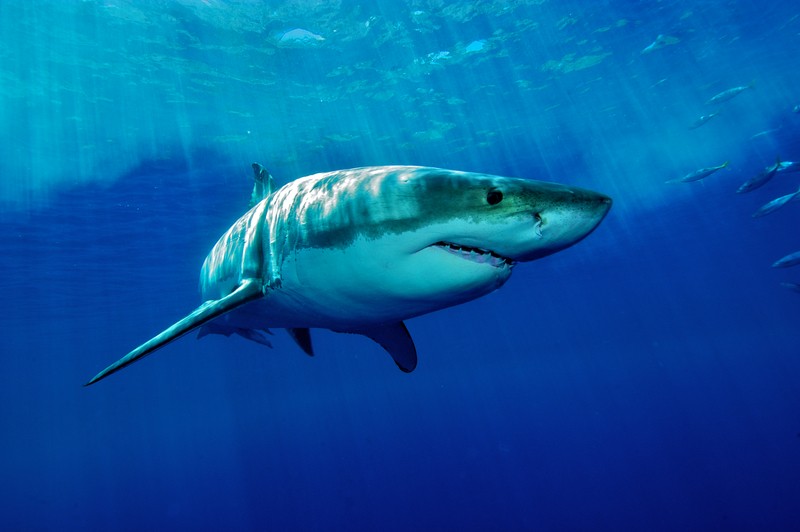They are scary creatures, for sure, but the more we know the safer we will be. Even though they have a predominantly “mean” look, sharks are not all as bad as they may seem! At least, not entirely. Take a look:
1) Why Sharks attack Humans.“If you don’t bother them, they won’t bother you.” This is one of the rules that applies to wild animals. According to the International Shark Attack File (ISAF), the most common type of shark attack is a provoked attack, where sharks become aggressive when disturbed or approached when, for example, divers go near their hangouts or try to grab them. However, unprovoked shark attacks also occur. So why do they attack even when humans aren’t doing anything? Some researchers think that sharks may have acquired a taste for humans after having repeatedly consumed human flesh, meaning they consider humans as prey and deliberately go after us. More scientists, however, believe that unprovoked shark attacks are cases of mistaken identity, where sharks mistake humans for their regular prey, either because of our actions in the water or our appearance. This explains why most shark attacks are catch-and-release or hit-and-run. The shark attacks, grabs a bite and then, realizing its mistake, leaves. Unfortunately, shark teeth are so large and powerful that one bite is often enough to result in death.
2) Great White Shark — The World’s Deadliest Shark? The great white shark alone is responsible for a third of all known shark attacks, with a total of 279, seventy-eight of which were fatal.
The great white shark can grow over 20 feet (6.1 meters) long and weigh over 7000 pounds (3175 kilograms). It is a fierce predator, eating other sharks, dolphins, small whales, seals, sea lions, sea turtles, sea otters and seabirds.
What makes the great white shark so dangerous? It’s because it is such an excellent hunter and because of the size of its teeth. While the bull shark is known to have a more powerful bite force, great white sharks have three hundred razor-sharp teeth arranged in seven rows, each about 3 inches (7.6 centimeters) long.
Still, scientists insist that great white sharks are simply “sample biting”, and are not out to get you. If you can get away after the first bite, then you can survive, even if it is at the cost of an arm or a leg.3) The USS Indianapolis Shark Attacks. Some consider the USS Indianapolis shark attacks to be the worst in history. Of its original 1196 passengers on board, only 317 survived, and nearly 150 of those who didn’t are believed to have been eaten by sharks.
On July 29, 1945, while the USS Indianapolis was en route to the Philippines from the Pacific island of Tinian, it was hit by torpedoes and sunk. Nine hundred of the passengers survived the torpedo attack, only to face a worse fate. As they tried to keep themselves afloat and alive in the open water, the sharks came, first eating the dead and then going after the living, nipping at those in the outer edges of the group.4) Who Do Sharks Go After? Sharks can go after just about anyone, young or old, male or female, who is within their reach. However, studies show that 93% of the shark attacks from 1580 to 2010 were on males, most of them between the ages of twenty-one and thirty. Also, divers are the most common victims, followed by surfers, swimmers and kayakers. This is because divers come the closest to sharks, sometimes knowingly or unknowingly diving near their hangouts and taunting them, while surfboards are often mistaken by sharks for prey. Divers collecting shells and marine organisms are also more commonly attacked than those who are simply exploring or taking pictures.
5) How to Survive a Shark Attack…In the event that a shark goes after you, the first thing you have to do is not panic — easier said than done when you’re caught between a shark’s teeth, but if you panic, all may be lost. Hit the shark in the nose or poke it in the eyes, and once it lets you go, swim toward the shore as fast as you can while shouting for help. If you’re injured, your life may depend on it.
The better way to survive a shark attack, though, is not to get attacked in the first place. You can save yourself from being a shark’s next snack by: not swimming when it’s dark, not swimming alone, not swimming when you are injured and not swimming in murky waters or under cliffs. You should also refrain from wearing bright colors in the water, which make you an easy target for sharks, and from wearing jewelry, since its sparkle will surely catch the shark’s eye.
There are more shark facts over on Ip Factly.
Again, it’s frightening prospect, to look a shark straight in their cold, dead eyes but there have been those that have done just that and are wiser for having done so.
Think of those skin divers and researchers that go down in shark repelling cages just so they can get a closer look. It’s a science as well as an adventure for many and the viewpoint welcomed by shark admirers all over the globe!

Bull Sharks can survive in sea & fresh water.
They are KNOWN to travel up the Mississippi River !
They have the Most Testosterone of ANY Animal on the Planet.
The best way to not be attacked by a shark is to stay out of the water. Just sayin’…